Pair of skyscrapers proposed for site of Calatrava's doomed Chicago Spire
Two "sister skyscrapers" designed by architect David Childs have been unveiled for Chicago's waterfront, nearly 10 years after work on Santiago Calatrava's ill-fated Chicago Spire halted on the same plot.
The 400 Lake Shore Drive development is located where the Chicago River flows into Lake Michigan, on the site the Spanish architect's 150-storey Spire began construction in 2007 but was stopped the following year due to the global financial crisis.
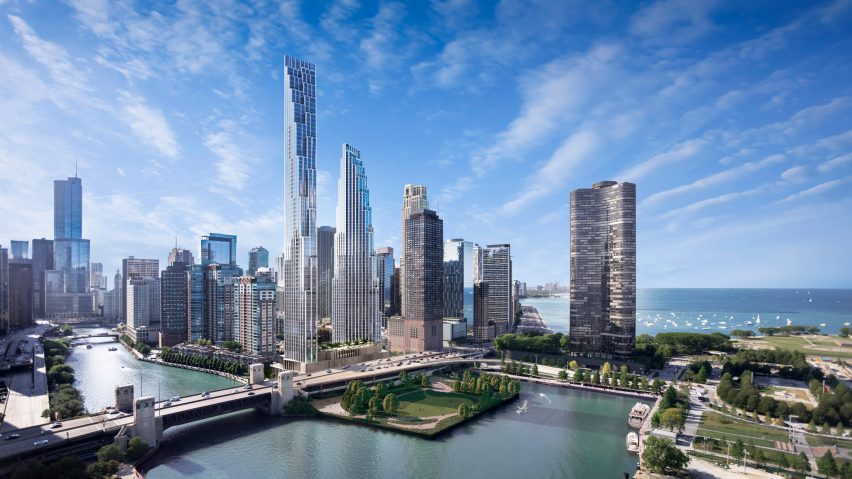
The Spire land was signed over to developer Related Midwest in 2014. The company ditched Calatrava's scheme in favour of the "sister skyscrapers" proposal, for which it enlisted Childs – designer of New York's One World Trade Center – and architecture firm Skidmore Owings and Merrill (SOM).
While Calatrava's spiral tower was planned to include 1,300 luxury apartments, the new scheme for 400 Lake Shore Drive includes a mix of luxury condominiums, apartments and a boutique hotel across the two skyscrapers.
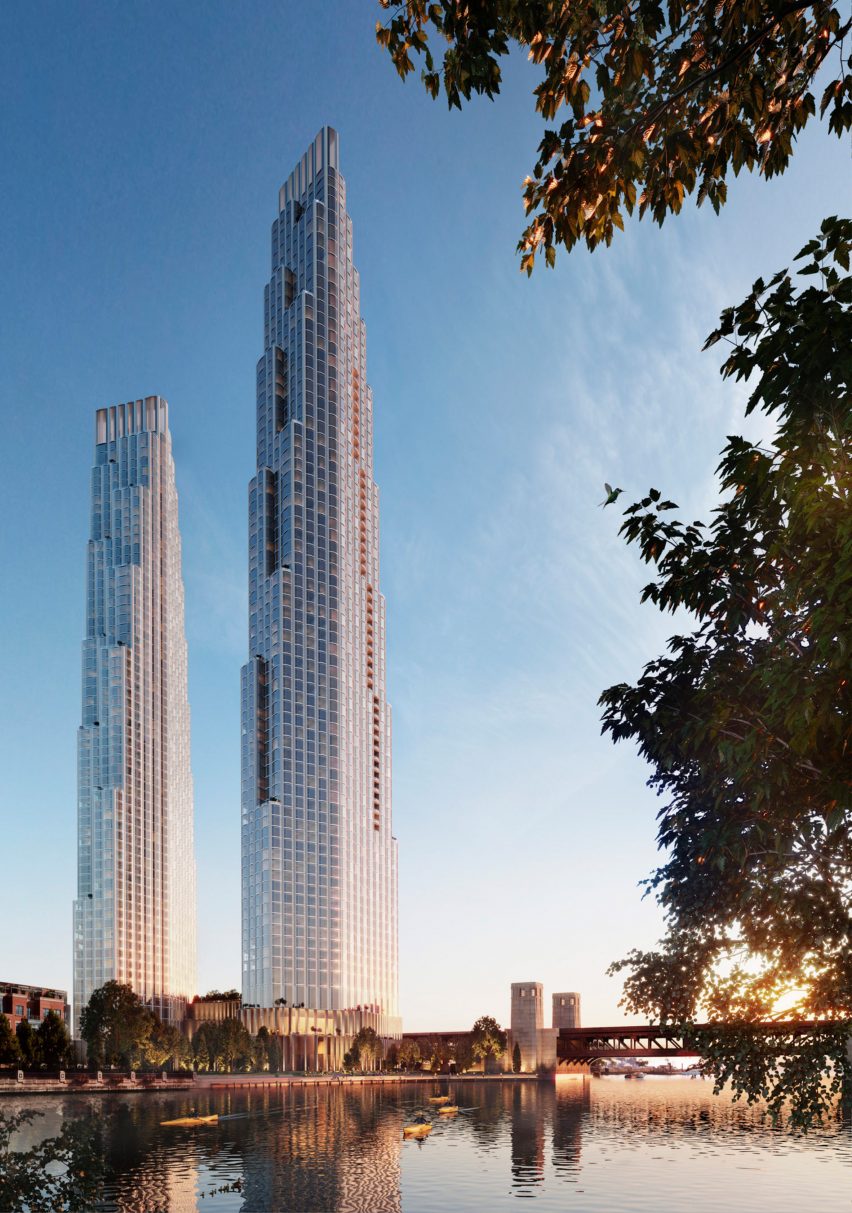
The pair will be positioned at an angle to one another, with a large gap left gap between to maintain views from Downtown Chicago to the water. The duo are a different shape and size: the South Tower is slender and tall, while the shorter North Tower is more stout.
"We are proposing a new urban destination: two residential towers, iconic both at their base and in the sky, differing in placement, rotation, and height," said Childs in a statement.
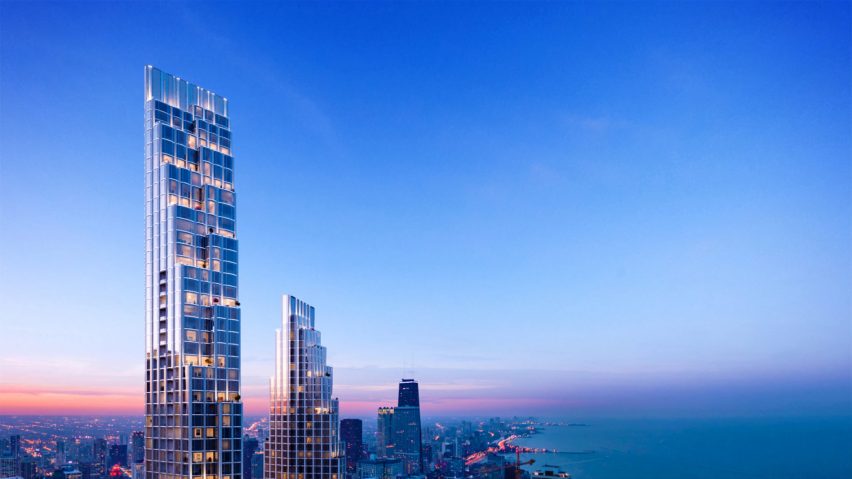
Staggered facades of terracotta and glass form balconies for the residences and hotel rooms, eventually narrowing towards the top to preserve vistas. Additional detailing will be provided by metal frames around the windows.
Childs' design also pays tribute to the history of the Chicago School – a group of architects that developed a variety of projects in the city at the turn of the 20th century. Among the main references is the choice of terracotta, which can be seen in Chicago landmarks including Wrigley Building, the Reliance Building, The Sullivan Center and The Rookery, and the rectangular bay windows formed of three parts.
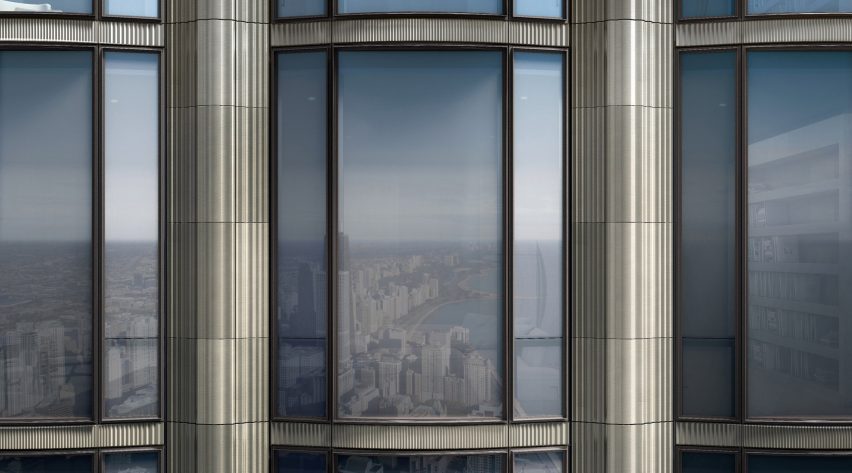
The 400 Lake Shore Drive address is also known as the former home of the city's founder, Jean-Baptiste Pointe DuSable.
Coming in 900 feet (274 metres) shorter than Calatrava's spire, the taller 1,100-foot-tall (335-metre) South Tower is located next to the Chicago Riverwalk, which the team plans to extend with a pass that goes underneath Lake Shore Drive. The addition would provide a direct link from Downtown to the lakefront and DuSable Park.
Inside, the South Tower will accommodate 300 of the condos and 175-room hotel, as well as some of the amenities, while 550 apartments will be located in the 850-feet-high (259-metre) North Tower.
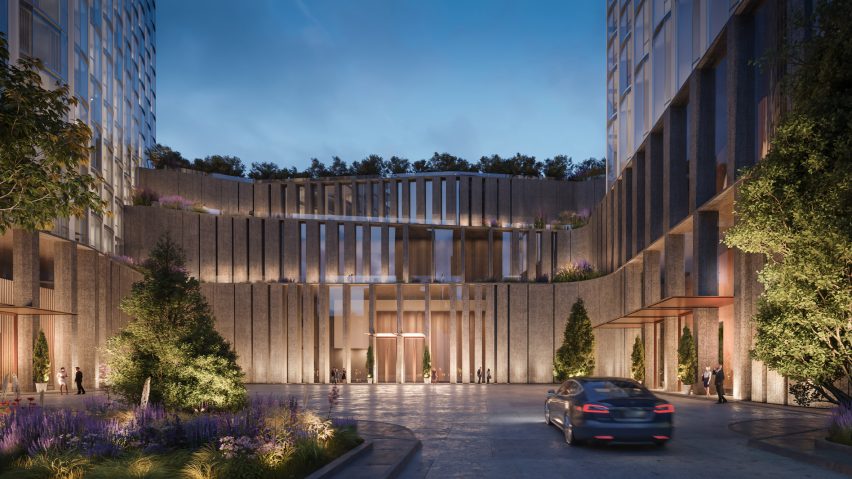
After Calatrava's design was scrapped, global firm Gensler proposed another alternative for the waterfront site, which was never picked up. Similar to Childs' scheme, it contained a mixed-use programme, with condos, rental apartments, two hotels, but also tourist attractions.
The Spire is not the first of Calatrava's projects to falter. Towards the end of last year, work on the Greek Orthodox church at New York's World Trade Center site was suspended indefinitely.
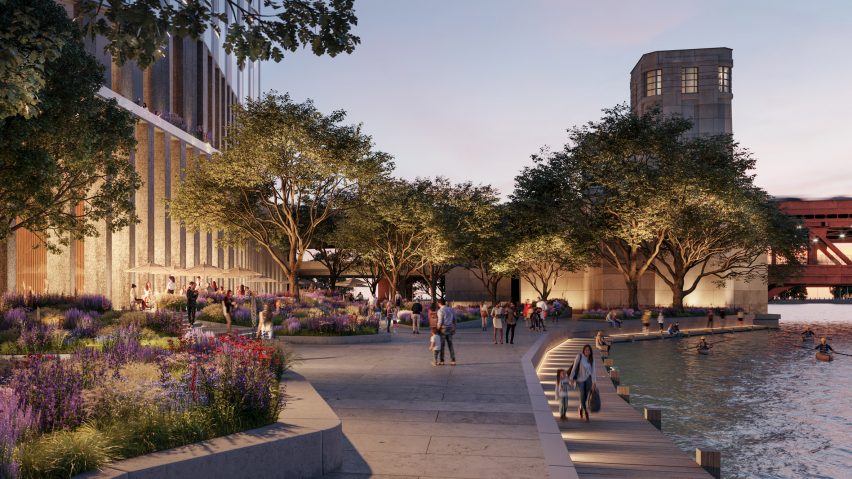
Some of his built works have also proved problematic – both the Oculus transportation hub in New York and the Ysios winery in Spain sprung leaks.
The City of Valencia also threatened to sue the architect after parts of the opera house roof at his City of Arts and Sciences complex began falling off, just eight years after completion.
Project credits:
Architect: David M Childs with Skidmore, Owings & Merrill LLP (SOM)
Structural engineer: William Baker, partner with SOM
Traffic consultant: Peter Lemmon, senior transportation engineer with Kimley-Horn and Associates